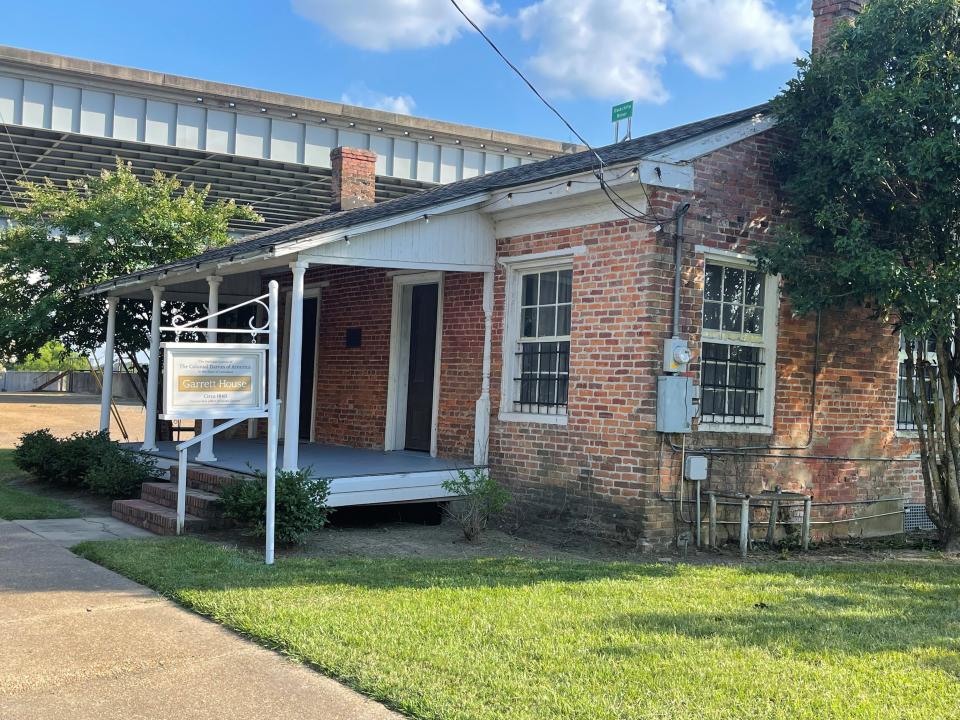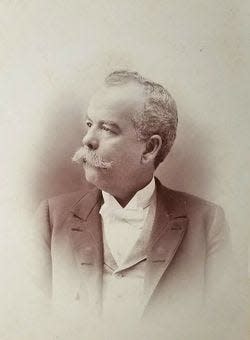Historic office of Monroe lawyer, politician who refused to sign ordinance of secession
A little red brick building located on the east bank of the Ouachita River was once the office of a noted Monroe attorney and statesman.
The Garrett House, located at 520 S. Grand St., two hundred yards from the site of the original Fort Miro and close to the I-20 overpass, served as the law office of lawyer and politician Isaiah Garrett.
Garrett was one of the most prominent attorneys in Louisiana. He was a member of the Constitutional Convention for the state in 1845 and was elected to the Secession Convention in 1860. He was one of the seven members of the Convention who refused to sign the ordinance of secession as it would have violated his oath of allegiance to the United States.
The house was built in 1840 by Samuel Kirby. The one-story building originally consisted of a 36-by-18-foot rectangle containing two rooms and a 21-by-18-foot wing on the left rear which served as a kitchen.

Kirby transferred the property to Garrett on March 5, 1842, when the young lawyer and graduate of the U.S. Military Academy relocated to Monroe from Missouri, according to records published by the National Register of Historic Places.
Downtown Monroe: Historic Ouachita Candy building is key piece of downtown Monroe's history, future
Shortly after moving to Monroe, Garrett met Narcissa Grayson. Narcissa's father, Col. Thomas Grayson, was an associate of Daniel Boone and moved to Louisiana in 1813. The Graysons were one of the founders of Caldwell Parish, and the town of Grayson was named for the family.
Isaiah and Narcissa were married in Ouachita Parish on May 10, 1836. The couple were the parents of eleven children; five of whom lived to maturity.
The soft red brick of the exterior has not weathered well and has undergone repair or replacement at various locations around the building. Although the basic form of the building and most of the original materials have remained intact, a number of changes have taken place.
The gable roof and the front porch building into two rooms have been removed. To provide for its present day needs, electrical wiring and bath facilities were installed by adding a 5-inch frame addition along the north wall of the ell on the rear of the structure. Although the fireplace mantel remains in the ell room, the chimney itself has been removed.
The two fireplaces in the front of the building remain and have simple Greek Revival mantels. Along the right rear wall one window and one door have been filled in with brick.

Downtown Monroe: Milner Motors: Former home of downtown Monroe car dealership listed on National Register
Garrett used the modest brick property for his law offices and practiced there for many years before his death in 1874. He was buried in the Old City Cemetery in Monroe, where a large obelisk marks his grave to this day.
After Garrett's death, the house was used for many purposes until the Monroe Committee of the National Society of the Colonial Dames of America was granted the right to use it as a museum to house materials and objects relating to the history of Louisiana and the United States.
The building was added to the National Register of Historic Places on July 12, 1972.
The property is currently owned by the City of Monroe.
Follow Ian Robinson on Twitter @_irobinson and on Facebook at https://bit.ly/3vln0w1.
Support local journalism by subscribing at https://cm.thenewsstar.com/specialoffer.
This article originally appeared on Monroe News-Star: Monroe offices of prominent lawyer and politician Isaiah Garrett

